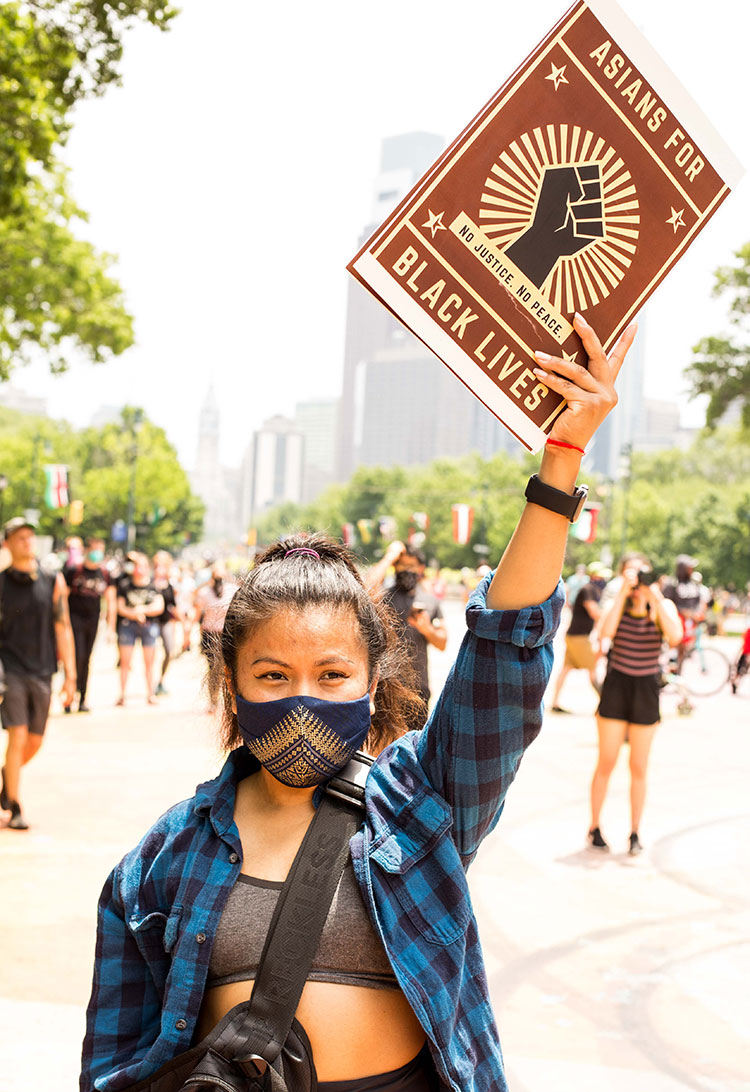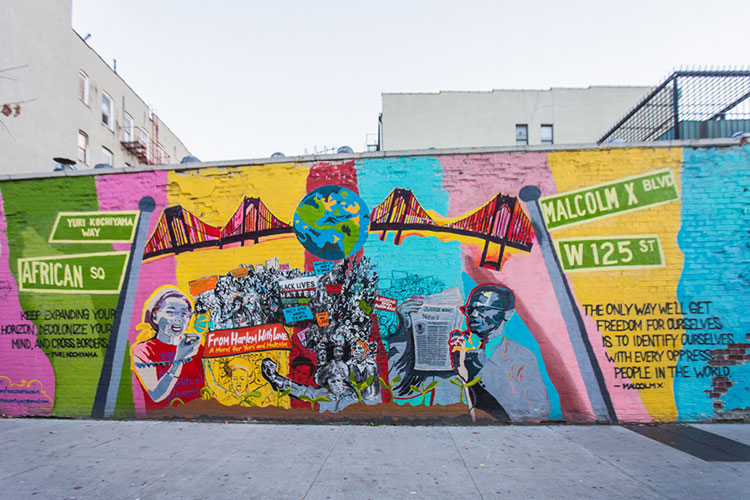Berkeley expert: In times of crisis, anti-Asian violence is an American tradition
March 17, 2021

The structural and historical roots of anti-Asian racism in the U.S. are part of contemporary Asian American race relations. This illustration shows an anti-Chinese labor meeting on March 20, 1880 outside of San Francisco City Hall. (Photo via Illustrated Newspaper)
Tuesday’s mass shootings at a string of massage parlors in the Atlanta area left eight people dead, including six people of Asian descent. Investigators have not confirmed a motive, but those killings — along with a rise in anti-Asian attacks in major cities — are an unsurprising reminder of the long history of anti-Asian violence in America, said UC Berkeley Asian American studies associate professor Lok Siu.

Lok Siu, UC Berkeley Asian American and Asian Diasporas Studies associate professor. (UC Berkeley photo)
And that violence, often driven by anti-Asian xenophobia, has become a structural American practice during times of crisis.
“Anti-Asian racism in this country just gets a new face-lift from time to time,” said Siu, who is an expert in Asian diasporas and transnationalism and has studied the social climate that created anti-Asian sentiments during the pandemic. “The continual and persistent reinvocation of the deeply ingrained notion that Asian Americans are ‘outsiders’ and therefore (don’t belong) in the U.S., fuels anti-Asian sentiments and attacks during moments of social crisis or disruption.”
“One might say that our economic system kind of inherently breeds this sort of racism and antagonism that produces racial conflict and violence,” she added.
Berkeley News spoke with Siu recently about how economic and capitalistic structures can produce racial violence, and why it is important for communities of color to come together to fight anti-Asian violence and racism.
Berkeley News: What would you say to someone who thinks these recent anti-Asian incidents are just singular acts that don’t represent a systemic problem?
Lok Siu: The recent rise in anti-Asian violence is not an anomalous situation. As of now, there are close to 4,000 attacks that have been reported to the STOP AAPI HATE website, and this is an undercount.
There is a long history of episodic violence against Asians in the U.S. since the late 1800s. You can go back to the very early experiences of the Chinese railroad workers that came in the mid-19th century and the violence targeted against them when they completed that work and made their way to cities where other Chinese had congregated. Between 1870s and 1880s, over 150 anti-Chinese riots erupted across the nation. In all, hundreds of Chinese were murdered, thousands were expulsed from various cities, and entire Chinatowns were burned to the ground by angry mobs who accused the Chinese of “taking jobs” from white settlers and bringing diseases.

A historical illustration of rioters assaulting Chinese men during an anti-Chinese riot on Oct. 31, 1880. (Illustration by N. B. via Illustrated Newspaper)
When you consider the forced internment of Japanese Americans during World War II, that’s a racially targeted event that violated the fundamental constitutional rights of Japanese Americans. Then, there is the Cold War McCarthyism of the 1950s, when Chinese Americans and Chinese organizations were targeted specifically because they, simply by being ethnically Chinese, were presumed to have political allegiance with the People’s Republic of China. Post 9/11, we also witnessed the rise in violence against Asian Muslims and Sikhs.
This current uptick in anti-Asian violence, then, is not exceptional. It is another iteration of racism against Asians in the United States.
What has led to this latest uptick in anti-Asian violence?
I think so much of the emphasis on last year’s uptick was around former President (Donald) Trump’s rhetoric of the “Chinese virus,” or the “kung flu,” that automatically associated the virus with Chinese people, a racial category that references people of Chinese descent, regardless of location. By blaming the Chinese as the cause of the pandemic, he ignited anti-Chinese sentiments and channeled popular fear and rage against East Asian-appearing persons.
Berkeley Conversation
Join us April 1 for a discussion on the history and surge of anti-Asian violence. Presented as part of the Matrix On Point series.
In some ways, that rhetoric has taken a life of its own and is circulating freely, shaping people’s perceptions of Asian Americans who share a similar phenotype and who are equally racialized as “outsiders” and “foreigners.”
On the surface, these latest incidents and the persistence of anti-Asian violence seem somewhat out of sync, given the fact that we now have vaccines, and our containment of the pandemic seems imminent. But when we stop to think about it, it isn’t that surprising.
Now, a year into the pandemic, people feel a deepening sense of despair, vulnerability and anger — not only from the loss of family and friends, but also the very real economic and material conditions of job loss, increasing debt, impending homelessness and the lack of meaningful state support to help those in need. I don’t think we can underestimate the emotional-psychological effects of all the trauma we have experienced this past year.
All of these factors have created a very volatile situation.
Unfortunately, it is easier to scapegoat and direct anger and rage against an easily identifiable culprit, rather than to understand the problem in its full complexity. Hate crimes are motivated by prejudice and bias against the victims’ actual or perceived race, religion, sexual orientation or national origins, and so forth. And while we can see the light at the end of the pandemic tunnel, the suffering caused by both human loss and economic despair will not go away any time soon.
In fact, the pandemic has laid bare the deep economic and racial disparities that have shaped and continue to shape the life chances of different racial communities.
Unfortunately, East Asian-appearing people, not just the Chinese, have become the racially marked and “identifiable culprit” upon whom blame can be placed and violence can be enacted. Sadly, it is the most vulnerable of Asian Americans — the elderly — that have been the main victims of these racist attacks: 84-year-old Thai American Vichar Ratanapakdee in San Francisco, Chinese American Pak Ho, 75, of Oakland and Nancy Toh, an 83-year-old Korean American woman in White Plains, New York, to name just a few.
Then, just yesterday (March 16), six Asian American women were shot, presumably while working, in three different massage parlors in Atlanta, Georgia.
There are many nuances that cause these types of acts, but one might say that our economic system kind of inherently breeds this sort of racism and antagonism that produces racial conflict and violence.
America’s economic systems are capitalist. Do you think violence and racism against Asian Americans is rooted in American capitalism?
This is a complicated issue. Asian migration is shaped by both the economic imperatives of our country and the political questions of Asian belonging in the United States. We see these two forces working in tension with one another from the mid-19th century onward.
As a racialized form of docile and compliant labor, Asian immigrants are welcomed into the workforce. However, when these same immigrants seek the right to citizenship and belonging, their racial difference often rubs against U.S. nationalism that is premised on white dominance.
It is easier to scapegoat and direct anger and rage against an easily identifiable culprit, rather than to understand the problem in its full complexity”
– Lok Siu
So, Asian Americans occupy this precarious position. What we have witnessed in American history are episodic irruptions of anti-Asian violence, which arise from the deeply ingrained idea that they are perpetually foreign, despite their economic integration. Often, the violence is accompanied by xenophobic discourses of Asians as a foreign threat, whether it is economic (jobs or unfair trade), biomedical (disease) and/or ideological (communism).
Some scholars — and I am thinking of Cedric Robinson, in particular — have argued that capitalism has always relied on the unequal differentiation of human value, based on racialism, to exploit for economic accumulation. This unequal differentiation of human value leads to racial hierarchization, antagonism and conflict.
I think Robinson’s idea of “racial capitalism” is a productive way to think about not just how racialization intersects with capitalism, but also how capitalism shapes the racial dynamics among different groups.
Do you think these economic institutions and structures have caused divisions between Asian Americans and different communities of color?
There are certainly incidents that reflect racial conflict. For instance, we can point to events like the 1992 Los Angeles uprising and the 1990 (Family) Red Apple boycott in New York City. Both occurred in economically impoverished neighborhoods that have complex histories of overlapping migrant flows. Each deserves much more careful analysis than I can provide in this interview.
It is important to acknowledge the hard work that the Korean American and Black community have done to build interracial solidarity and to engage in restorative justice over the decades.

A protestor in Philadelphia holds an “Asian for Black lives” sign — created by activist Kalaya’an Mendoza — in solidarity with the Black Lives Matter movement. (Flickr photo by Joe Piette)
What I want to emphasize is that we often focus on spectacles of racial conflict, especially Black-Asian American conflict, and we neglect to showcase the mundane practices of racial collaboration. This is an effect of the media’s penchant for sensationalism, of course. But this lopsided representation of Asian-Black conflict overshadows all the important and sustained community-based, grassroots work that is being done among Asian Americans, Black people and other people of color.
These kinds of cross-racial collaborations are not new, and it is troubling that we do not foreground them more because they give us a historical frame to understand our contemporary moment. I am thinking, for instance, of Frederick Douglas, who spoke against Chinese exclusion, of Yuri Kochiyama’s allyship with Malcolm X and her work with Black, Puerto Rican and Asian American activists.

Yuri Kochiyama, a Japanese-American civil rights activist and her friend, Malcolm X, are immortalized on a mural in Harlem, New York. (Flickr photo by Quench Your Eyes)
There is also Grace Lee Boggs’ lifelong activism in civil rights and the Black Power movement.
If we turn our attention to these efforts of cross-racial alliance building, I think we would have a very different perception of racial relations and a different blueprint of how to address the issues that confront our communities.
Why is it important for communities of color to work together, in regard to anti-Asian violence?
Community activists understand the work of systemic racism and its differential effects on communities of color. They understand the importance of working across and together.
For instance, Asian Americans are calling for non-carceral solutions to address anti-Asian violence. Hundreds of people are volunteering to escort elderly Asian Americans to keep them safe. And Black and Asian American communities are coming together in rallies to show solidarity.
This is truly powerful.
And I hope we can sustain this kind of mutual engagement and support for a long time to come. There is so much work ahead still, but I feel we are in a moment of great transformative possibilities.
